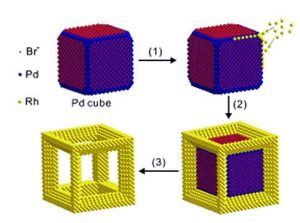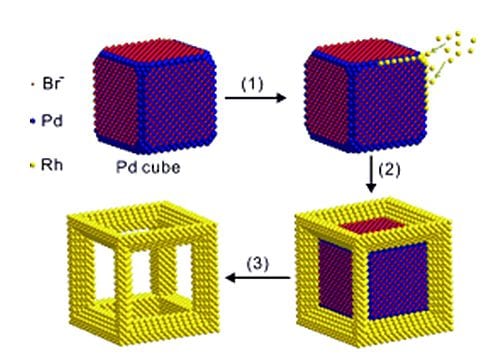 Edges of nanomaterials show special and exciting properties. Compared with atoms of “inner” surfaces, they have a different chemical environment, lower coordination numbers, and different charge redistributions. In their review about the edges of nanoparticles (NPs), researchers from Tsinghua University highlight the fact that when thinking about NPs, one should always consider their morphology.
Edges of nanomaterials show special and exciting properties. Compared with atoms of “inner” surfaces, they have a different chemical environment, lower coordination numbers, and different charge redistributions. In their review about the edges of nanoparticles (NPs), researchers from Tsinghua University highlight the fact that when thinking about NPs, one should always consider their morphology.
In heterogeneous catalysis, the surface atoms of the catalyst are responsible for the catalytic activity of the material. These catalytically active metal centers need free coordination sites in their coordination sphere. Therefore, edge atoms, which have a low coordination number, are often the most active part of catalyst materials. This phenomenon can be observed, for example, in the MoS2-catalyzed hydrogen evolution reaction, where hydrogen gas forms only at the edges, not at the basal planes, of the MoS2 particles. Particularly interesting are also the edges of interfaces. When different materials are in very close proximity, they can, for example, bring reactants together or stabilize different states of a catalyzed reaction.
Based on the desirable properties of edges, researchers try to increase the number of edges on nanomaterials. Nanoframes (NFs) and ultrathin nanowires (UNW) are examples of such materials. The content of edge atoms in these NPs is vastly increased, since the interior atoms have mainly been removed. NFs and UNWs show high catalytic activity, but apart from that, little is known about their reactivity and structure.
To learn more about the properties of edges, which can be of great importance not only for heterogeneous catalysis but also for other materials such as graphene, the structures and properties of nanomaterials have to be thoroughly studied. This is difficult, partly because of their instability, yet, it is crucial for the further development of NPs and for the identification of further applications.
Advanced Science is a new journal from the team behind Advanced Materials, Advanced Functional Materials, and Small. The journal is fully Open Access and is free to read now at www.advancedscience.com.

















